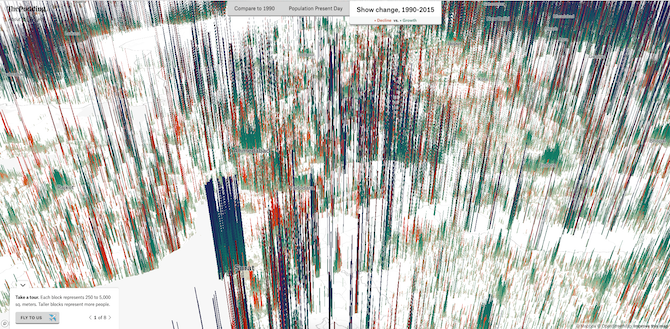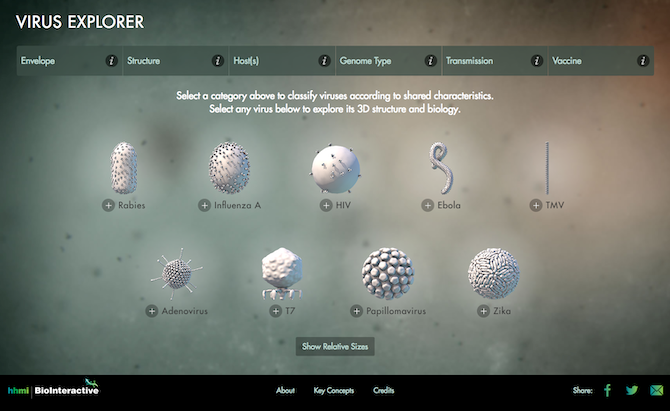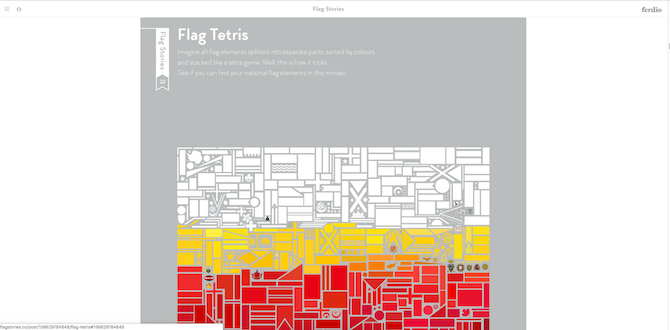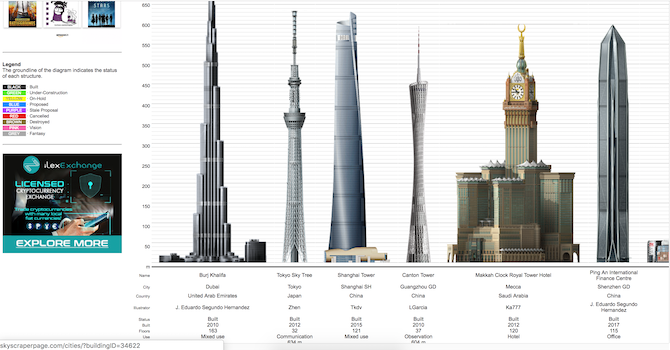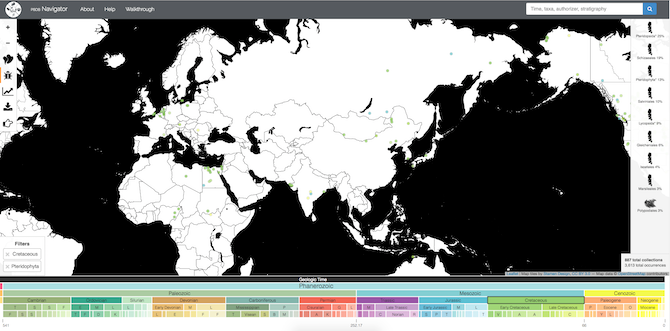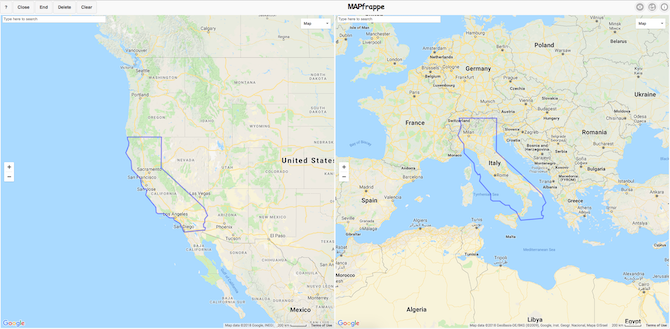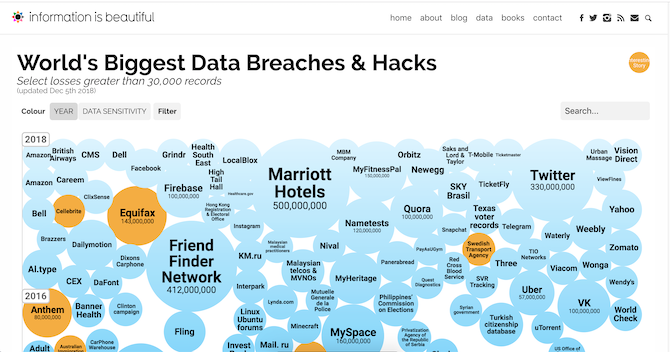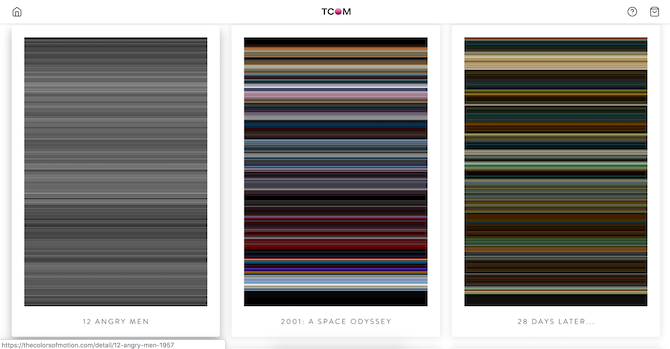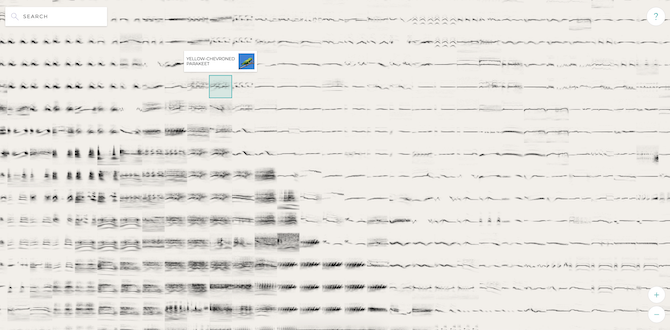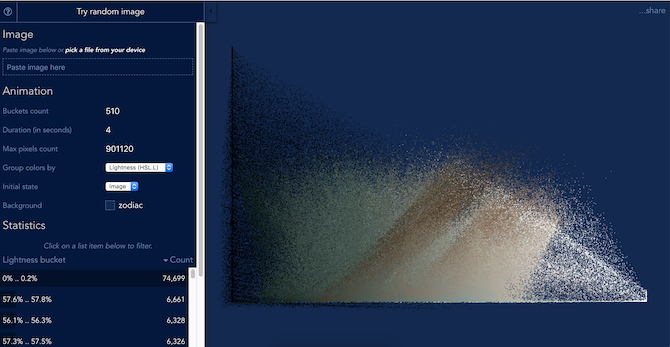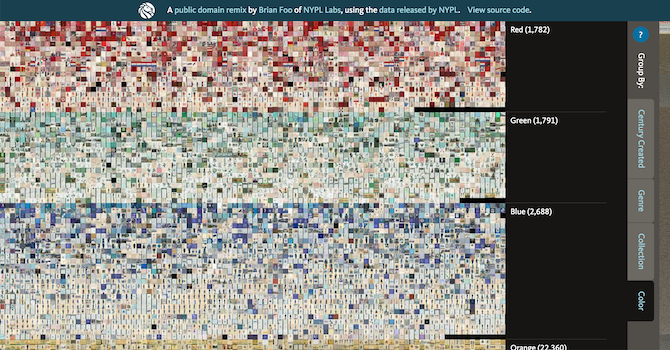The internet is awash with an unimaginable amount of data. Nearly every piece of information in the world today is available online. Not all of it is in dull datasets and spreadsheets. Creative data visualization has turned unknowable information into stories. You can check how diverse a city is or slip back in time to pour through archaic manuscripts preserved for centuries.
There are many websites working to present data in a more visual and interactive manner. Here are the eleven most beautiful websites for data nerds.
1. The Pudding
The Pudding publishes visual data essays on a wide selection of topics you wouldn't normally find on other platforms. That includes questioning whether pop lyrics are getting more repetitive, a three-dimensional model of the world's population across several periods, analysis of film dialogues by gender, and fantastic visual explainers.
Also, the majority of these are depicted in 3D. They're also interactive so that you can explore by simply navigating around.
Recommended: The Largest Analysis of Film Dialogue by Gender, Ever
2. Virus Explorer
This data-centric website, as the name suggests, lets you study viruses and examine them through 3D models. Virus Explorer also offers insights on a host of other characteristics of a specific virus such as whether a vaccine is available for them, their structure, genome type, and more. What's more, you can view them in relative sizes to further understand the differences.
Recommended: Browse through Click & Learn for more interactive educational resources.
3. Flag Stories
Flag Stories is the ultimate destination for people who are fascinated by the world's various flags. The website comes with tens of intriguing illustrations which present flags like you would have never seen before.
Some of our favorites are the Most Used Flag Elements that tells you which shape is the most popular among flag makers (no surprises there, rectangle won), all the flags stacked like a Tetris game, dominating layouts, and more.
Recommended: World history in flags
4. Skyscraper Page
Skyscraper Page compares each and every one of globe's skyscraper on a scale that everyone can grasp. The website's database houses tens of thousands of tall buildings, all of which are placed side-by-side on a common chart. You can, of course, categorize them based on cities or countries.
It also lists additional information on the skyscrapers such as when was it built, the designer behind it, height, and more.
Recommended: Stadiums
5. PBDB Navigator
PBDB Navigator is a goldmine for palaeobiology students, professionals, and enthusiasts. The service lets you browse the world through space, time, and taxonomy. It features all the essential and advanced tools you would require for visualizing the globe at a particular age whether it's the Jurassic period or when an organism was first discovered according to geologic time.
6. MAPfrappe
Ever wonder how two locations differ in size but you can't visualize it through sheer numbers? Try MAPfrappe. It allows you to put places on top of each other so that you can truly picture the differences.
MAPfrappe works by outlining the first place you'd like to include and then, select the second one. Once done, it overlaps both of them giving a concise understanding of the size variances.
7. Information is Beautiful
Information is Beautiful is similar to The Pudding but with a lot more topics and colors. The website, as you'd expect, presents data from a vast number of subjects in attractive designs that help you make comparisons. You can grasp how trillion dollars look like, the story of the world's biggest data breaches, and even get a scene-by-scene breakdown of true story-based movies to see how precisely accurate they are.
Recommended: Reimagine the Game
8. The Colors of Motion
The Colors of Motion is another astonishing website for data nerds which explores the use of colors in movies. The site breaks down every frame to a color and stacks all of them together to form mesmerizing charts and posters of iconic films like Blade Runner 2049, A Beautiful Mind, and more. You can even buy the posters from The Colors of Motion for a starting price of $20.
9. Bird Sounds
Bird Sounds is part of Google Experiments and lets you play and learn sounds of over ten thousand birds. The app's homescreen lists all the available sounds based on their frequency profiles which you can click to play and reveal the corresponding bird. In addition, there's an option to search.
10. Pixel Chart
Pixel Chart comes with the ability to decompose any picture into thousands of pictures. Their color intensities are mapped on a histogram. The website is perfect for photography geeks who are looking to expand their knowledge.
Along with the snazzy animations, Pixel Chart also shows the maximum pixel count of a picture and can group the pixels by lightness, hue, saturation, and more.
11. NYPL's Public Domain Library
The New York Public Library's collection of ancient items in the public domain is another captivating data-oriented app you should check out. It contains hundreds of thousands of items dating back to the eleventh century. Letters by historical figures, the seventh map of Europe, vintage photos, and more treasures. The web app even lets you sort all of these by century, genre, collection, and color.
Recommended: The Mansion Maniac Game
Turn Information Into Knowledge
Data can be boring. But it also depends on the eye of the beholder. Visualizations reduce the overwhelm and can give you a bird's eye view of rich data. But are you a data nerd who really wants to roll up your sleeves? Then don't forget the vast open resources offered by the likes of Google's Dataset Search tool.


